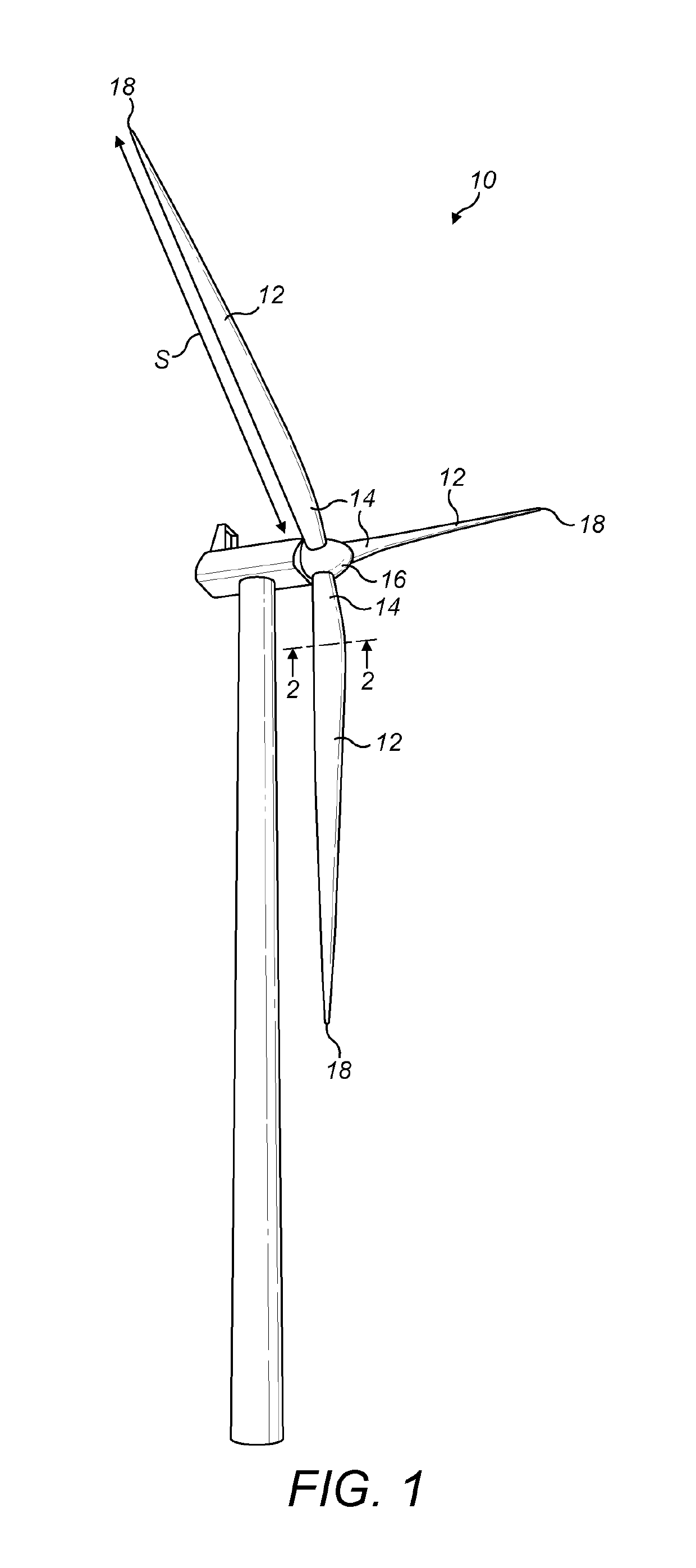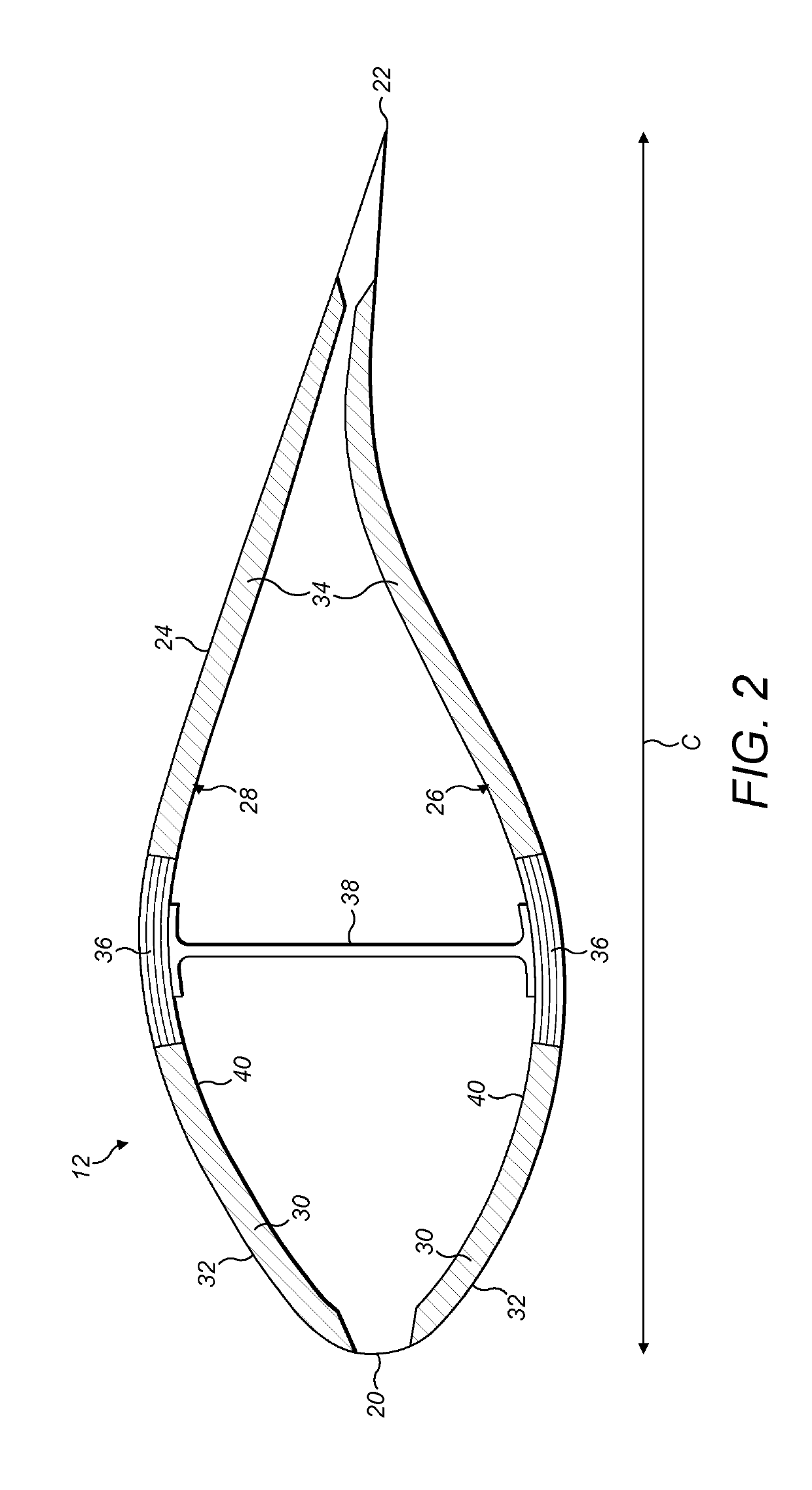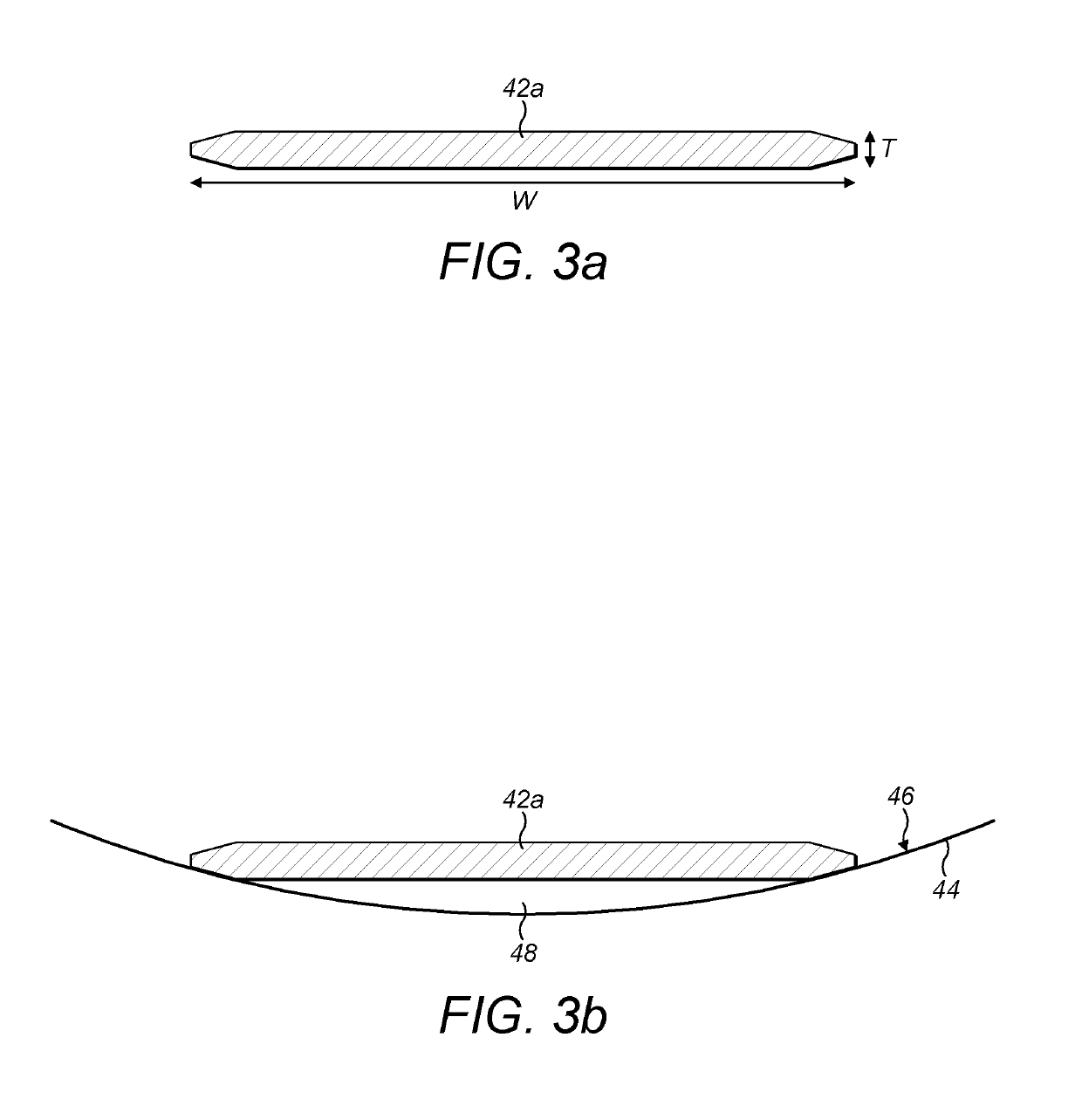Reinforcing structure for a wind turbine blade
a technology of reinforced structure and wind turbine blade, which is applied in the manufacture of final products, machines/engines, other domestic articles, etc., can solve the problems of strip cracking along the groove(s), and achieve the effect of enhancing resin infusion and maximising resin spa
- Summary
- Abstract
- Description
- Claims
- Application Information
AI Technical Summary
Benefits of technology
Problems solved by technology
Method used
Image
Examples
Embodiment Construction
[0048]FIG. 1 shows a wind turbine 10 comprising a plurality of wind turbine blades 12. The blades 12 are connected at their respective root ends 14 to a wind turbine blade hub 16. Each blade 12 extends in a longitudinal or ‘spanwise’ direction S from its root end 14 to a tip end 18. Typically the blades 12 are substantially circular at their root ends 14, where they connect to the hub 16. The blades 12 then develop an airfoil profile in transverse cross-section moving in the spanwise direction S towards the tip 18.
[0049]FIG. 2 is a schematic transverse cross-sectional view of one of the wind turbine blades 12 of FIG. 1, taken along the line 2-2 in FIG. 1. It can be seen from FIG. 2 that the blade 12 has an airfoil profile in this region. The blade 12 extends in a ‘chordwise’ direction C between a leading edge 20 and a trailing edge 22. The blade 12 comprises an outer shell 24, which in this example is formed from a windward half-shell 26 and a leeward shell 28 that are bonded togeth...
PUM
| Property | Measurement | Unit |
|---|---|---|
| length | aaaaa | aaaaa |
| lengths | aaaaa | aaaaa |
| thickness | aaaaa | aaaaa |
Abstract
Description
Claims
Application Information
 Login to View More
Login to View More - R&D
- Intellectual Property
- Life Sciences
- Materials
- Tech Scout
- Unparalleled Data Quality
- Higher Quality Content
- 60% Fewer Hallucinations
Browse by: Latest US Patents, China's latest patents, Technical Efficacy Thesaurus, Application Domain, Technology Topic, Popular Technical Reports.
© 2025 PatSnap. All rights reserved.Legal|Privacy policy|Modern Slavery Act Transparency Statement|Sitemap|About US| Contact US: help@patsnap.com



